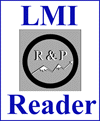
By: Fay Walther
 |
Introduction By: Fay Walther |
First a synopsis of some concepts and terms used in LMI is given. This summary will include definitions, illustrations, and a general introduction to the concepts used in this reader. A definition of the term labor market information is: LMI is an applied science; it is the systematic collection and analysis of data which describes and predicts the relationship between labor demand and supply. From “The States’ Labor Market Information Review” of the Interstate Conference of Employment Security Agencies (ICESA), labor supply is defined and measured in terms of “employment to population ratios, skills of the employed and unemployed, educational characteristics, personal and group barriers to employment.”
“Labor demand is measured in terms of prevailing wages and benefits, current employment and job vacancy levels, conditions of work, occupations and skills of the employed and unfulfilled skills needs of employers.” In the article by Lee Saathoff, the concept of demand in the labor market is defined as “the current level of employment plus current job vacancies.” There are a number of factors that influence labor demand, such as the opening of new firms or the expansion of other businesses. Another factor which influences demand is the size of the firms in the area; larger firms usually have greater labor market demand. Not all openings are due to job creation; some demand is also created by replacement openings when employees change jobs, retire, or leave a position for any reason. Knowledge of the concept of labor demand is important for employers, employees, students, and job seekers. It can help in career planning and decision making.
The term NAICS refers to the relatively new North American Industry Classification System. In the article by Gayle Edlin on industry information, she states that “analyzing industry information can be a valuable means of learning more about the labor market.” Occupations and wages can be compared across industries. Basic industry information can also be combined with other data sources, such as demographic information. Past information can be used to project what might happen in the future. An overview of several publications which are helpful in understanding industry information is also provided: for example, the 1994-1998 What Does the Future have in Store for the Wyoming Labor Market? Some of these publications are available free of charge from the Research & Planning (R&P) Division of the Department of Employment.
The concept of a wage survey is defined as a questionnaire to obtain information about staffing patterns and what businesses across the state pay for certain occupations. In the article entitled “ Occupational Wages,” Valerie Davis defines a staffing pattern as the distribution of occupations in a firm or industry. Several types of wage surveys have been done by R&P including OES (Occupational Employment Statistics). The OES is a federal/state cooperative program with the Bureau of Labor Statistics (BLS). Occupational projections, based in part on staffing pattern data, are useful for determining estimates of the types of occupations that will be growing and the types that will be declining in the future. These estimates are derived from taking past data and applying it toward the future by using statistical methods. The writer provides an overview of wage surveys in a synopsis of her article entitled “ The Importance of Wage Surveys”. She also reviews other articles on wages which are available from R&P and provides a list of Internet sites for accessing these articles.
The concept of labor force segmentation is illustrated by a review of four articles in this reader. The segments of analysis are age and gender. Some of the work experiences of these segments and labor outcomes such as wages may differ from the larger population or from other segments. The articles which illustrate this concept include youth and employment; gender and employment; and gender, tenure, and employment. The writer, Fay Walther, summarizes some differences in wages between males’ and females’ from original research by Gregg Detweiler and Brett Judd in R&P: “The difference between males and females average weekly wage was substantial, with males earning $528 and females earning $270.” In analyzing this concept, some cautions must be kept in mind. Presently, the available data does not allow us to draw a distinction between full- and part-time employees and occupations. This segmentation of the labor force presents some interesting challenges to researchers and some possible implications for education and training.
The overall focus of this reader is to introduce LMI concepts using Wyoming examples. Sections of the reader may be read in sequence to give an overall picture of LMI in the state of Wyoming. Or, if a person has a special interest primarily in one topic, he/she may read just that section. Generally, for ease in comprehension it is recommended that when using this reader as a stand-alone tool, the person proceed sequentially through the material.
This reader is in the initial stages of development and will probably
be expanded later this year. Some sections under consideration
focus on statistics and research designs. We are asking for
feedback on this first edition of the reader. For example, what
information is of most interest to you and your clients/students?
Do you have any suggestions on content or style that would improve
future editions of this reader? This LMI reader represents a
pioneering effort and we look forward to using it in our workshops
and offering it to our other customers. Please complete the
questionnaire. Thank you.

|
| Table of Contents | Labor Market Information | Wyoming Job Network | Send Us Mail |